牛津小学英语2B Unit 6 第四课时(精选11篇)
牛津小学英语2B Unit 6 第四课时 篇1
第四课时(4th period)一、主要新授内容(new contents)let’s talk: i am sorry. it’s ok. 二、学习目标(objectives)1、本课将学习致歉“i’m sorry.”it’s ok.”2、结合本单元的主题――夏天,创设语言使用环境,学习句型。3、适当拓展单词swimming pool,应答句型:that’s all right. 4、掌握字母yy, yellow。三、教学建议1、任务前期准备阶段(pre-task preparation section)pre-task preparation是指我们要求学生运用目的语(即所学的语言)之前,呈现给学生的新语言材料。也就是我们常说的:input。在这个环节可以是复习前面所学知识引出新知识,也可以让学生获得对新语言材料的第一次感知。 activity 1 (guessing)1、教学辅助(aids)1) 电脑(2b-u7-16)2.活动过程(process)stepscontentsmethodspurpose1guessing game(出示一个拼图的一角)t:look,this place is very intreseting.guess! what is it?
p: is this a park/zoo/beach?t: no,it is a swimming pool.运用游戏吸引学生的注意,在猜谜过程中激发学生的积极思维,引出新课内容。2repetitionit is a swimming pool.(出现完整的游泳池画面)初步感知新授内容。 activity 2 (story)1、教学辅助(aids)1)电脑(2b-u7-17)2)屏幕 2.活动过程(process)stepscontentsmethodspurpose1questions and answers do you like to go to the swimming pool?what do you like to do in the swimming pool?巩固以前所学知识,激发学生思维,为新课作准备。2story(录音)1.(游泳池画面出现孩子玩水球的场景)sam was eager to get into the people to play with the children,. a boy passed the ball and it bounced on sam;s head. the bay apologized . i;m sorry. sam replied: it’s o.k.通过观看多媒体画面,并聆听故事录音,体会本课的语用环境..activity 3 (questions and answers)1、教学辅助(aids) 2.活动过程(process)stepscontentsmethodspurpose1questions and answerst: what seaon did the story happon in?what’s the weather like in summer?where are the children what did the boy say? what did sam say?通过问答,激活学生思维.2repetitioni’m sorry.it’s ok(p-p) 2、任务中期实施阶段(while-task procedure section)while-task procedure,这是指语言技能的习得过程。其中分为机械性操练和意义性操练两部分。机械性操练可以让学生准确地模仿、复说新授的语言,让他们经过从模仿到识记的过程,使新知识由感知、理解、模仿直到储存。由于本教时新授内容是歌词,可以根据需要设计相应知识点的机械性操练和意义性操练。在这种情况下,建议每项activity形式尽可能不同,时间不要长,一个活动紧接着一个活动,容易抓住学生的注意力,维持学习兴趣。 activity 1 (chant)1、教学辅助(aids) 2.活动过程(process)stepscontentsmethodspurpose1i’m sorryit’s okchant:sorry,sorry, i am sorry.ok,ok,it is ok.在节奏朗读中练习句子的发音。2make a new chant要求学生用不同声调朗读。在诵读中巩固句型的运用。 activity 2 (act)1、教学辅助(aids)1)电脑(2b-u7-17)2)屏幕 2.活动过程(process)stepscontentsmethodspurpose1storylisten to the story again.听力培养2act the story(学生两人一组扮演对话)体会句子的使用. activity 3 ( look and say )1、教学辅助(aids)2.活动过程(process)stepscontentsmethodspurpose1that’s all right.教师和学生进行对话表演p: i’m sorry.t: that’s all right.引导学生仔细观察,通过比较了句子的含义。2repetitionp:i’m sorry.p: that’s all right.拓展应答句,丰富学生句汇量. 完成比较扎实的机械性操练,就进入了意义性操练阶段。意义性操练是介于机械性操练和交际性操练之间,起着承上启下的作用,把语言形式的操练转向语言内容的操练,使学生的认知逐步从知识外部特征转向知识内在的联系。完成句型巩固。 activity 4 (dub)1、教学辅助(aids)1) 电脑(2b-u7-18)2) 屏幕 2.活动过程(process)stepscontentsmethodspurpose1i’m sorry. it’s ok.that’s all right. (出示sam迟到,跑步撞到别人,忘记带作业,乱放文具等四幅图片)请学生以小组为单位讨论,你是sam 你该说什么?创设真实的语言实践的环境,激发学生表达的兴趣。2dub请学生为情境配音通过创设的情境,让学生进行语言操练。 3、任务后期完成阶段(post-task activity section) post-task activity,这是指经过机械性操练和意义性操练,引导学生运用他们所获得的知识与技能来完成一个交际性的任务“task”,也就是语言的输出:output。学生通过前两个阶段的学习,在知识和能力上已具备综合新旧知识进行交际的能力,教师可以根据学生的实际水平设计或选用提供的活动,使学生在相应的尽可能贴近生活的语境中,正确有效使用习得语言,完成交际性的任务。。 activity 1(short play)1、教学辅助(aids) 2.活动过程(process)stepscontentsmethodspurpose1make a short play小组讨论今天学的致歉的句子还能在什么情况下使用,分角色扮演。学以致用,激发学生思维。2act the play请两组表演。小组合作。activity 2(quick response)1、教学辅助(aids)1)电脑(2b-u7-19)2)屏幕 2.活动过程(process)stepscontentsmethodspurpose1quick response(根据屏幕上出现的画面进行快速应答)eg: how are you?good morningthank you!创设真实的语言实践的环境,激发学生表达的兴趣。2pair works找好朋友,进行快速应答灵活运用所学知识,达到交流的目的。activity 3(exercise)1、教学辅助(aids)1) 学生练习册 2.活动过程(process)stepscontentsmethodspurpose1练习册第20页look,listen and say the correct response.练习册,看第20页上的图片,两人一组讨论交流:in summer, i like to …培养学生看图说话的能力。2练习册第20页llook,listen and say the correct response.练习册,看第20页上的图片,听录音快速回答
牛津小学英语2b unit 7 第四课时 来自98e范文网。
牛津小学英语2B Unit 6 第四课时 篇2
教学内容:d部分 listen and write和h部分say a rhyme.
教学目标:
1. 能听懂、会说、会读和会拼写单词fish,能听懂、会说和会读词组animal show, go for a walk.
2. 会诵读歌谣run,rabbit, run!
教学重点:训练学生听读能力。
教学难点:找准关键词,培养学生听力。
教具准备:录音机、幻灯片、纸袋偶、跳绳。
教学过程:
step1 revision
1. group work. 小组表演上节课布置的任务,分角色表演对话。
游戏名称:纸袋偶paper—bag puppet
游戏规则与说明:
①制作纸袋偶,在纸袋上画上五官,并剪出眼睛和嘴巴,并按照人物特征(jim, dad)进行修饰。
②小组合作,用纸袋偶表演课本剧。
③评选最佳演员。
2. complete the sentences.根据课文内容完成填空。
①jim is ______ _______ english and maths, but he ______ _______ do well in pe.
②do you ______ help_______your homework?
③ben ________ ________ than me.
④jim is _______ as _______as the other boys.
⑤do _________ exercise. you’ll get __________.
check the answers.
read the sentences together.
step2 presentation.学习d部分
1. 学习单词fish,词组animal show, go for a walk.
①双簧表演。
一人背对着表演者发指令,另一人背对指令者做动作。指令参照:this is a monkey. he can jump high. look, he can jump higher. i’m a tiger /… i’m fish. i can swim. i can swim very fast… but now i don’t want to do other things, i just want to go for a walk.
②引出新知:fish, go for a walk.
read after the teacher. 注意:go for a walk 和 take a walk联系起来,新旧知识对比。
③do you like this‘animal show’?
learn:animal show.
④all the students show.
2. look at the picture.
①questions:who are they? where are they? what may they talk about?
先看图,猜测对话内容,为听力做准备。
②guess and say. 猜一猜四道题的内容。
③listen to the tape twice.
④complete.
⑤check the answers, then read.
3. question:what should they see?
鼓励学生发挥想象,根据课文继续练说。
step3 say a rhyme‘run, rabbit, run!’
1. look at the picture and guess.看图片,猜测歌谣内容。
2. read the rhyme. 认读歌谣中已经学过的单词和句子。
3. listen to the tape. 要求学生注意语音、语调、语气。
4. what does the rhyme mean? 进一步猜测歌谣内容。在此过程中学习词组different sport.(不同的运动)和句子 running is great fun! 最后总结:they have a lot of fun.(玩得开心)
5. read after the tape. 跟读歌谣。
6. read the rhyme by yourselves.
step4 consolidation.
1. listen and write.
①there’s an animal show over there. let’s go and watch it.
②the monkeys and bears can skate so well.
③how about going for a walk around the lake?
④the fish swim faster than the ducks.
⑤well done, well done!
2. say and chant.教师带领学生按照节奏边说歌谣边做跳绳动作,每说一个节拍就必须跳一次,活跃课堂气氛。
step5 布置作业
1. 读写d部分,看谁写出的句子最多最生动。
2. 完成 补充习题a部分和e部分。
板书内容:
fish, animal show, go for a walk.
板书设计:
牛津小学英语2B Unit 6 第四课时 篇3
教学内容:《牛津小学英语》6b unit 8 prat d talk and write.练习册part f.
教学目标:
1、熟练掌握unit 7 的四会词汇及句型。
2、掌握有关人物信息的句型及日常交际用语。
教学重点:
1、熟练掌握unit 7 的四会词汇及句型。
2、掌握有关人物信息的句型及日常交际用语。
教学难点:能综合运用有关人物信息的句型及日常交际用语。
教具准备:采访提纲、录音。
教学过程:
step 1 warm up
1. greetings
2. say a rhyme i want to write a letter.
step2 revision
t: i have a penfriend. this is something about her . listen to the tape twice. and try to auswer the questions.
(1)what’s the name of my penfriend ?
(2)how old is she ?
(3)where does she live?
(4)what’s her telephone number?
(5)what’s her e-mail address?
(6)what are her hobbies?
(7)what’s her favourite season?
(录音内容:mary is my penfriend. she is eleven. she lives in new york. she is a student at new york primary school. her favourite subjects are english and art . she likes playing the piano and jogging . she likes. winter best, because she can make snowmen with friends . oh. her e-mail address is mary @newyork . com.
ss answer the questions
step3 talk and write
t: can you tell me something about your best friends?
1、教师出示问题,与个别学生交谈
2、同桌之间相互交谈
3、指名到前面交流
4、学生参考老师所给的采访提纲,列出自己的采访提纲,分小组进行采访。学生既是采访者,要根据自己的采访提纲发问并在采访中记录相关信息,同时又是被采访者,随时准备接受别人的采访。
5、交流采访所得,比一比,看哪一位同学了解到的信息最多。
step 4 look read and complete
完成练习册f部分。
1、自行阅读表格,了解有关wei hua 的信息
2、学生试着填空。
3、指名说说自己填写的内容,师适时纠正。
4、朗读片段。
5、学生以wei hua的身份,同桌之间进行自我介绍。
step 5 homework.
组织出一期“our best friends”的海报,要求学生将各自的采访信息写成一篇短文发表在海报上。
板书内容:
unit 8 review and check. ‘s best friend
name age city
telephone number school
favourite subject hobbies
penfriend’s name
板书设计:
牛津小学英语2B Unit 6 第四课时 篇4
教学内容:《牛津小学英语》6b unit 6 e read and number
教学目标:
1、听懂、会说和会读单词project, zebra, africa, elephant。
2、能在教师指导下正确理解语篇内容,提高学生的朗读和阅读理解能力。
3、能在理解的基础上,指导学生找到相应的图片。
教学重难点:正确理解语篇的内容,并能实际运用。
教具准备:录音机、磁带、图片、小黑板(投影片)等。
教学过程:
step1 warm up
1. sing english songs
教师组织各小组进行英语歌曲的演唱比赛。
2. everyday english
学生以小组形式自由交谈本单元所学内容。
step2 revision
1. listen,read and say
①小组内分角色表演课文。
②教师抽查几个小组的课文表演情况。
③学生自由准备复述课文。
④教师抽查几个学生复述课文的情况,全班学生评议。
2. listen and write
①listen to the tape and repeat.指名学生重复,以抓住全体学生的注意力。
②学生小组内准备课文背诵或复述情况。
③抽查学生课文背诵或复述情况,全班学生评议。
step3 presentation and consolidation(e read and number)
1. 教师先指导学生阅读本课的语言材料,大致理解句子含义,想象活动场景。
2. 学习project, zebra, africa, elephant
教师可采取不同的处理方法:①可在阅读前讲解;②可启发学生通过上下文猜测;③也可指导学生借助课文插图理解词意。通过多种方法,使学生养成良好的学习习惯和形成有效的学习策略。
3. 引导学生阅读对话,选择合适的图片,完成本部分阅读练习。
4. 学习短语。
①学生自由画出短语。
②教师和学生共同讨论并出示短语:a class outing, your class project, at the bus stop, meet at the bus stop, at 10:30, what animals, look at, look at the monkeys and the elephants, a new zebra, in the zoo, be from africa, what time, come home, at 4:30。
③choose and complete.
to about for at from in
1. we’re going _________ the zoo.
2. you told me ________ it.
3. it’s ________ your class project.
4. we are going to meet ________ the bus stop ________ 10:30.
5. what animals are you going to look _________?
6. there’s a new zebra _________ the zoo.
7. it’s ________ africa.
学生自由完成练习。
集体订正。
全班齐读。
④学生自由读课文。
⑤指名学生读课文。
⑥学生试背课文。
step4 homework
1. 熟练朗读并背诵e read and number。
2. 表演e read and number。
3. 默写四会单词和四会句型1遍,将错误的地方默会。
4. 预习 f play a game, g listen and repeat 和 h sing a song。
板书内容:
a5 b1 c4 d2 e3
板书设计:
牛津小学英语2B Unit 6 第四课时 篇5
教学内容:6b第五单元第四课时。
教学目标:part d、f.
教学重点:
能听懂、会说、会读和拼写单词weather, spring, autumn, winter, hot, cold.
能听懂、会说、会读和拼写句型 what’s the weather like…?
教学难点:能听懂、会说、会读单词season, because, countryside, warm, cool, rain, rainy, sunny, windy, snowy, cloudy, rowing, snowball fights.
教具准备:单词卡片、教学挂图、录音机。
教学过程:
step 1 pre-task preparation:
1. daily report.
what’s the weather like today?
2.revision.
revise the following words: season, because, countryside, warm, cool, rain, rainy, sunny, windy, snowy, cloudy, rowing, snowball fights.
3.say a chant:
spring, summer, autumn and winter,
which season do you like best?
spring, spring, i like spring best.
summer, summer, they like summer best.
autumn, autumn, we like autumn best.
winter, winter, we all like winter.
summer is hot, winter is cold,
autumn is cool and spring is warm
spring is sunny, summer is rainy,
autumn is cloudy and winter is windy.
step 2 while-task procedures:
look and say:
show a picture to the ss, then say something about ma li. she is from guangzhou. ma li is now telling su yang about the four seasons in guangzhou.
1.questions:
what does ma li often do in the park?
what’s the weather like in summer in guangzhou?
what’s the weather like in winter in guangzhou?
where does ma li often go walking?
2.look and think:
在听录音之前,让学生先看填空题。因为有的填空完全可以预测的。就d部分的文本来说,学生完全可以预测一半的填空题。先看题,做到心中有数,再听录音时就会胸有成竹了。
3.listen and write:
it is _______ in spring. the trees turn _______. ma li often goes _______ in the park. it is very ______ in summer. it often ________. ma li often goes _______. the days get ________ and the nights get ________ in autumn. it is often sunny. ma li often goes _______ in the countryside. it is not _______ in winter. it is sometimes _________. ma li often goes jogging after school.
step 3 post-task activity:
1.a guessing game.
using the word cards, play a game “what’s missing?”
2.make and play.
做和玩的时候,如果引入竞赛,效果就会非常好,特别是分组竞赛。
step 4 homework:
1. listen to the tape.
2. surf the internet about the weather in new york.
板书内容:
warm, green, rowing, hot, rains, swimming, shorter, longer, walking, cold, windy.
板书设计:
牛津小学英语2B Unit 6 第四课时 篇6
【教学设计(teaching design)】 unit 6 eating and drinking 第四课时(4th period)一、主要新授内容(new contents)let’s play—a picnic 二、学习目标(objectives)1、在做游戏的语言使用环境中,能用正确的语音语调说出一些已经学过的职业词汇bowl, plate, glass等。2、在第三课时的学习基础上,能熟练运用i’m thirsty / hungry. i want …等简单语句进行表达。3、在活动过程中,学习新句型:what do you want? i want …,词汇:salad, sausages, mineral water, fruit juice,能熟练正确地按实际表述。4.通过创设picnic的情景,学生之间能自然流利地用所学内容了解对方喜爱的、需要的物品和食品。 三、教学建议1、任务前期准备阶段(pre-task preparation section)pre-task preparation是指我们要求学生运用目的语(即所学的语言)之前,呈现给学生的新语言材料。也就是我们常说的:input。在这个环节主要让学生获得对新语言材料的第一次感知。 activity 1 song1、教学辅助(aids)1) 录音机2)图片 2.活动过程(process)
stepscontentsmethodspurpose1song:five fat sausage教师告诉学生今天将举行一个野餐活动,老师为大家带了一 些sausages,请学生一起学唱一首歌,播放歌曲的音带,让学生轻松愉快地唱歌。运用学生熟悉的歌曲引出本课的新授内容,激发学生的兴趣,并学习新单词:sausage。2questions & answerst: what food / drinks do you want for a picnic?s: …(教师将食品、饮料的图片贴在黑板上)让学生通过回答复习已学的句型i want some … 和单词。
activity 2 let’s count1、教学辅助(aids)1) 图片 2.活动过程(process)
stepscontentsmethodspurpose1question:what can you see?出示p30的图片,让学生观察几分钟后,在不看画面的情况下,说出看到的食品名称。通过画面,既引出了新课picnic,又复习了食品名称,为以后的output 作铺垫。2question:how many …s?再次出示p30的图片,让学生仔细观察后,在不看画面的情况下,用seven pears等说说记住的内容。通过出示画面,在考考学生记忆力的游戏中,复习了数字和食品名称搭配的词组,为以后的output 作铺垫。
activity 3 ask and answer1、教学辅助(aids)1) 录音机2)图片 2.活动过程(process)
stepscontentsmethodspurpose1question:教师问学生除了sausage,。还喜欢什么食品或饮料。通过学生的真实表达,创设语言场景。2new words:salad , mineral water, fruit juice通过猜一猜的游戏活动引出 salad, 通过闻一闻的游戏活动引出两种饮料名称。在确保完成基本教学目标的基础上,结合学生的学习能力对教学内容进行拓展,有助于学生在实际生活中表达更为准确和真实。
2、任务中期实施阶段(while-task procedure section)while-task procedure,这是指语言技能的习得过程。其中分为机械性操练和意义性操练两部分。机械性操练可以让学生准确地模仿、复说新授的语言,让他们经过从模仿到识记的过程,使新知识由感知、理解、模仿直到储存。由于本教时新授内容有词汇也有句子而且都在两个以上,在这个教学阶段也可以设计新授知识的二次或多次导入,并根据语言训练的需要设计相应的机械性操练和意义性操练。在这种情况下,建议每项activity形式尽可能不同,时间不要长,一个活动紧接着一个活动,容易抓住学生的注意力,维持学习兴趣。 activity 1 matching game1、教学辅助(aids)1) worksheet 2.活动过程(process)
stepscontentsmethodspurpose1match: 教师发给每位学生一张 worksheet, 要求他们将a 栏中的单词 hungry / thirsty ,和b栏中孩子头像(bubble 中画有食品或饮料)连起来。通过连线的练习,在单词、图片配对的基础上对学生的逻辑思维进行训练,并且复习了上一课时的内容。2check: 学生按照刚才的连线内容,仿照老师说: i am hungry / thirsty. i want some / four / a / an ….
activity 2 (situation)1、教学辅助(aids)1) 图片 2.活动过程(process)
stepscontentsmethodspurpose1listen and answer:教师提问:who is hungry? 学生回答:i’m hungry. 教师引出what do you want? 在反复问答中学生听懂并能回答。通过师生间真实的问答情景,吸引学生注意力,引出新授内容。2what do you want?在听的基础上,学生上口:what do you want?并进行看图操练:1.t: it’s cold. what do you want? (出示2幅图:围巾和太阳眼镜)2.s: it’s hot.. what do you want? (出示2幅图:冰激凌和手套)3.s: you are hungry. what do you want? (出示2幅图:水和饼干)4.s: you are thirsty. what do you want? (出示2幅图:果汁和蛋糕)… 在跟读掌握新句型的基础上,通过问答活动,不仅进一步巩固练习,而且为学生的语言运用创设了一定的情景。
activity 3 ( discussion)1、教学辅助(aids)worksheet 2.活动过程(process)
stepscontentsmethodspurpose1make a picnic plan教师把学生分成若干小组,要求他们以小组为单位,做一个picnic plan. 所用句型: what do you want?然后在表格中写下同学的姓名和想要的物品。通 通过小组合作活动,创设较为真切的情景,操练巩固了新知识,学生之间能自然流利地用所学内容了解对方喜爱的、需要的物品和食品。2report:根据刚才的表格,做汇报活动:i want… wants… 教师了解小组活动及学生的掌握情况,全体学生在个别汇报的过程中进行了一次很好的听的训练活动。
完成比较扎实的机械性操练,就进入了意义性操练阶段。意义性操练是介于机械性操练和交际性操练之间,起着承上启下的作用,把语言形式的操练转向语言内容的操练,使学生的认知逐步从知识外部特征转向知识内在的联系。由于本教时先完成词汇的新授,因此就先设计有关词汇的意义性操练活动,再导入新授句子前,完成词汇巩固。activity 4 ( guessing game )1、教学辅助(aids)worksheet 2.活动过程(process)
stepscontentsmethodspurpose1writing and speaking教师设置以下情景,学生一一写出一样想要的物品,进行pair work:t: it’s your birthday.
a—b: you want a cake.b: yes, i want a cake. ( no, i want some sweets.)t: it’s a picnic.t: you have a new room.t: it’s christmas day.t: you’re hungry.t: you’re thirsty.… 通过学生写一写,猜一猜的活动,巩固所学的单词、句型。
3、任务后期完成阶段(post-task activity section) post-task activity,这是指经过机械性操练和意义性操练,引导学生运用他们所获得的知识与技能来完成一个交际性的任务“task”,也就是语言的输出:output。学生通过前两个阶段的学习,在知识和能力上已具备综合新旧知识进行交际的能力,教师可以根据学生的实际水平设计或选用提供的活动,使学生在相应的尽可能贴近生活的语境中,正确有效使用习得语言,完成交际性的任务。由于一年级的语言量非常有限,所以可以考虑借助练习册中相应的练习设计。 activity 1(listening and speaking )1、教学辅助(aids)1)listening material: 2.活动过程(process)
stepscontentsmethodspurpose1listening学生听一段听力材料:i am . i am hungry. i want ….i am . i am thirsty. i want ….i am . i am hot. i want ….i am . i am cold. i want ….i am . it’s my birthday today. i want ….结合新学的知识,训练学生的听力技能。2repeat:t: what can you catch? 学生尽可能复述听到的内容。听的基础上训练学生说的技能。
activity 2(reading and matching )1、教学辅助(aids)worksheet 2.活动过程(process)
stepscontentsmethodspurpose1reading:worksheet: ( group work )每一组一篇对话形式的阅读短文,分角色朗读,内容包含hungry, thirsty, salad, mineral water, sausage, fruit juice, what do you want? i want…等。培养学生的朗读能力。 2matching:每人一张worksheet, 根据短文,按要求连线。通过让学生为人物和食品配对的活动,认读单词,句型来培养学生最基本的阅读能力。
activity 3 writing1、教学辅助(aids)1) worksheet 2.活动过程(process)
stepscontentsmethodspurpose1look at the picture and circle::学生看worksheet 的图片:左边:tom想要三块饼干右边:tom: i am ________. (hungry/thirsty) . dad: what do you want? tom : i want three ____.( biscuits / cakes )…生动形象的画面为学生创设了良好的语言学习的环境,学生在看一看,想一想,圈一圈的活动中巩固了认读单词、句型。2read and act:请学生为选刚才练习中的一段,两人一组表演。巩固今天的学习内容,且交流语用的本领。
牛津小学英语2b unit 6 第四课时 来自98e范文网。
牛津小学英语2B Unit 6 第四课时 篇7
教学内容:完成练习册
教学目标:综合复习一至三单元所学的语言知识,培养学生综合运用语言的能力。
教学重点:培养和发展学生综合运用所学语言的能力。
教具准备: 磁带,录音机,投影片。
教学过程:
step 1 warm up
1 greetings
2 sing two songs. “i wish i was taller ” and “excuse me”
3 free talk.
教师投影出示相关的人物或动物进行比较的情景图及有关问路的情景图,让学生展开对话交际.
step 2 do the workbook .
1 listen and judge.
(1) try to talk about the pictures in english.
(2)listen and judge.
(3)check.
2 listen choose and write.
(1) read the words, please.
(2)listen and choose.
(3)check.
(4)complete the sentences.
(5)read the sentences together.
3 look, think and write
(1) look at the pictures and read the sentences, then write the words.
(2) check.
(3) read the sentences.
4 look, read and ask.
(1) look at the pictures and choose the questions.
(2)make the dialogues with your partner.
5 look and complete.
(1) look at the pictures carefully
(2) complete the sentences.
(3) read.
6 read and answer.
(1) read three times.
(2) answer the questions.
step3 作业布置:
1 以“asking the way”为题,编一段小对话.
2 预习unit 5 .
板书内容:
unit 4 review and check
who is taller than ...?
can you tell me the way to…,please?
how far is it from here?
.how many stops are there?
板书设计:
牛津小学英语2B Unit 6 第四课时 篇8
教学内容:e. look, read and judge.补充练习a部分
教学目标:
1.能听懂、会说、认读单词centimeters。
2.通过观察、朗读、训练学生阅读理解语篇的能力,并能针对问题做出正确判断。
3.通过听力练习,提高学生观察思维及听的能力。
教学重点:能正确流利朗读阅读材料,并理解内容。
教学难点:
1.流利、规范朗读语言材料
2.正确完成听力
教具准备:录音机、磁带、图片、词卡等
step 1 warm up
1. greetings
2. sing a song: i wish i was taller!
3. free talk
利用室内现有物品及学生实际情况,围绕b.c部分的词.句及…as…as…句型与学生间灵活展开对话,以此检查学生对知识掌握情况:
step 2 revision
1. listen repeat and answer(a部分内容)
①on sunday morning. where did su hai go for a walk?
②who did she meat?
③what did they do under a big tree?
④do su yang and su hai look the same?
⑤is su hai as tall as su yang?
⑥who’s younger, su hai or su yang?
⑦does jack have any brothers or sisters?
⑧how old and is jack?
2. look and read
出示b部分图片比较,生说形容词及其比较级。
3.写出形容词的比较级
step 3 presentation
1.导读e部分引言部分,学习goal keeper。
2.生自由朗读。
3.学习165 centimeters。
出示指导朗读,并适当拓展。
4.指生读
5.指导生完成下面的判断
6.read and check
step 4 do exercise(练习册a部分)
1. look at the pictures and talk about them.(可让生同位间进行)
2.listen to the tape.(指导生记录关键词语)
3.listen and repeat.
4. listen and judge.
5. listen and check.
step 5 home work
1. read the text of part a.
2. read and write the words two times.(b部分)
板书内容:
词组:b部分的形容词及其比较级goalkeeper, centimeter
句型:…as…as…
…(比较级)than…
板书设计:
教后笔记:
牛津小学英语2B Unit 6 第四课时 篇9
教学内容:a. listen, read and say(第三部分)
教学目标:
1、能听懂、会说、会读词汇:subject, e-mail address。
2、能听懂、会说、会读日常交际用语i hope so。
教学重点:
1、address的发音。
2、正确理解,掌握并朗读对话内容。
教学难点:能熟练演对话。
教具准备:a部分挂图、小黑板、图片、磁带、自录一段关于peter的录音。
教学过程:
step 1 warm up
1. greeting
2. free talk
上节课已布置学生准备问题,课前教师可事先检查,找出较好的问题,请2位学生提问,其他同学回答。
question:
①does liu tao want to have a postcard?
②what does liu tao want to have?
③what does liu tao want to do? …
3. revision
①全班学生集体朗读引言和第一部分对话。
②分角色背诵对话。
③四人一组分组表演对话。
step 2 presentation
1、教师在课前自录一段peter自我介绍的录音,将peter的有关情况直观、形象地展示给学生,让学生们和对话中的liu tao一起了解peter,现帮助liu tao一同向妈妈介绍peter的情况,并和liu tao的妈妈一起建议liu tao如何回信。录音内容如下:
dear friend:
i’m peter, i’m from the uk. i want a penfriend in china.
please listen to my self-introduction.
i live in london. i have a brother and a sister. i like listening to music and making model planes.
2、学生听完两遍录音后,小黑板出示准备好的问题。教师将全班学生分为四大组,每一组派出一名代表上台选择问题进行回答。
question: ①who’s peter?
②where does he live?
③does he have any brothers or sisters?
④what are his hobbies?
3、“liu tao的妈妈建议如何回信”这一部分可让学生直接打开书,四个人为一组,合作学习。
①每组中的由一个学生读对话,其余三个学生填空。
②指名读出所填内容。 ③集体订正。
step 3 consolidation
1、听录音,跟读本节课所学对话。
2、自我介绍。
游戏规则:要求学生在写自我介绍时,不提到自己的名字,将全班分为六至八组,把收上来的个人简介打乱发给每个学生,让学生通过阅读猜出作者是谁。
step 4 homework
1、听a部分录音,熟读并背诵、表演a部分对话,下节课检查。
2、全班齐读。 3、男女生分角色朗读。
4、写一篇自我介绍,下节课汇报。
板书内容:
1、课题:unit 7 a letter to a penfriend.
penfriend wanted
name: peter white
age: 12
city:
family: mum, dad, and .
hobbles:
2、
板书设计:
牛津小学英语2B Unit 6 第四课时 篇10
第四课时(4th period)一、主要新授内容(new contents)let’s play- it’s ___ o’clock. 二、学习目标(objectives)1、进一步学习时间的表达。在情景中能熟练运用。2、学会认读,书写有关数字的单词,培养学生最基本的阅读能力和书写能力。3、结合本课的主题―time,创设语言使用环境,在为sam制作一天的作息时间表的过程中,学会熟练地用it’s ___ o’clock. 来表达。4、在玩玩,做做的过程中,激发学生学习的兴趣。 5. 宽度拓展 art p.e, chinese, maths music 三、教学建议1、任务前期准备阶段(pre-task preparation section)pre-task preparation是指我们要求学生运用目的语(即所学的语言)之前,呈现给学生的新语言材料。也就是我们常说的:input。在这个环节主要让学生获得对新语言材料的第一次感知。 activity 1 rhyme1、教学辅助(aids)1) 单词卡片2)录音机 2.活动过程(process)stepscontentsmethodspurpose1rhymesay and act:one, two, three, it’s a tree.four five six, pick up sticks.复习以前学过的儿歌,激发学生的兴趣,为新课作准备。2read the words(教师出示数字1-12,和15,30,45的单词卡片)can you read them?(将卡片贴在黑板上)复习单词为新授打下扎实的基础。activity 2 look and say1、教学辅助(aids)1)电脑(2b-u8-14)2)屏幕 2.活动过程(process)stepscontentsmethodspurpose1look and say. 屏幕显示(swim, play on the beach, pick up the shells, get up, have lunch/breakfast/ dinner, watch tv, go to bed)动作图通过多媒体设置的画面吸引学生的注意力,鼓励学生开口用1-2句话表达。2加快图片滚动速度,分组比赛,每幅图一句话,时间不够不得分。(group work)e.g. i like to swim.i want to play on the beach.i get up at seven o’clock.i have lunch at twelve o’clock.通过看一看,说一说,复习日常生活中的常用动作,为引出新课作准备。 2、任务中期实施阶段(while-task procedure section)while-task procedure,这是指语言技能的习得过程。其中分为机械性操练和意义性操练两部分。机械性操练可以让学生准确地模仿、复说新授的语言,让他们经过从模仿到识记的过程,使新知识由感知、理解、模仿直到储存。由于本教时新授内容是为sam完成作息时间表,因此在这个教学阶段可以设计活动的二次或多次导入,并根据语言训练的需要设计相应的机械性操练和意义性操练。在这种情况下,建议每项activity形式尽可能不同,时间不要长,一个活动紧接着一个活动,容易抓住学生的注意力,维持学习兴趣。 activity 1 (read , write and say )1、教学辅助(aids)1)书 2.活动过程(process)stepscontentsmethodspurpose1write down the times1. 看书,说说sam在干什么?2.为每个活动设计一个时间,并写下来。 通过为sam的活动设计时间,引出新课内容,激发学生的兴趣。 2describe:e.g. 1. it’s seven o’clock. sam gets up.通过看图,写一写,说一说,培养学生的读写能力和熟练运用句子it’s __o’clock的能力。..1、教学辅助(aids)1)电脑(1b-u2-16)2)屏幕3)7个时间卡片 2.活动过程(process)stepscontentsmethodspurpose1match(group work) 1.教师:input:this is sam’s dairy life, he gets up, have breakfast,... and go to bed. lets make a time table for sam.2.每组分发7个时间卡片,与sam的活动相匹配运用多媒体为学生创设良好的语言环境,让学生在看一看,跟着老师一起说一说sam的一天,学习新知,培养学习的兴趣。2look and say.(group work ) 1. match and say.2. 抽1-2组汇报。 this is sam’s time table. at six o’clock, sam gets up. at seven o’clock, sam ... ... .把时间与活动建立直接的联系,让学生了解通常情况下什么时间做什么事。且让每人开口讲。 activity 3 (questions and answers)1、教学辅助(aids)1) 屏幕2) 录音机 2.活动过程(process)stepscontentsmethodspurpose1questions and answers. 教师:do you know sam’s time table? let’s ask sam, o.k?1. ss: sam, sam, what time do you get up?2. listen:i get up at six o’clock. 3. write down the time.(可用同样方法完成下面6幅图)1.人机对话,激发兴趣,导入新课内容。2.把听到的时间写下来,即可培养学生认真倾听的习惯,有可培养学生的默写的能力。2make a dialogue.同桌根据sam作息表,便小对话。然后表演。通过编画对话,表演,让学生熟练运用时间表达法。并初步了解时间与生活起居的联系。 完成比较扎实的机械性操练,就进入了意义性操练阶段。意义性操练是介于机械性操练和交际性操练之间,起着承上启下的作用,把语言形式的操练转向语言内容的操练,使学生的认知逐步从知识外部特征转向知识内在的联系。由于本教时是为sam制定作息表时间表,因而与学生的生活联系紧密,设计意义性操练活动也应更为贴近学生生活。 activity 4 (act and say)1、教学辅助(aids) 1) 投影仪 2)作息表格2.活动过程(process)stepscontentsmethodspurpose1make a time table 1.为自己制定一个作息表 有时间和活动内容的填写,都可因人而异,发展个性。2talk about the time table. 1.同桌交流2.抽2-3人汇报培养听和说的能力。activity 5 ( draw, show and say )1、教学辅助(aids)1)印有多项学生喜爱的活动的卡纸2)投影仪 2.活动过程(process)stepscontentsmethodspurpose1look, choose and draw1.说说图上的活动(已学过的)2.看图,选出你喜爱的活动,并画上时钟。若喜欢别的活动,自己也可再画上去。 1.说说图上的活动,了解游戏的内容。2.顾及学生的兴趣爱好。2show and introduce: 展示自己的佳作,并作介绍(内容可从活动时间,项目等着手) 在做做,说说的过程中,能加深记忆。 3、任务后期完成阶段(post-task activity section) post-task activity,这是指经过机械性操练和意义性操练,引导学生运用他们所获得的知识与技能来完成一个交际性的任务“task”,也就是语言的输出:output。学生通过前两个阶段的学习,在知识和能力上已具备综合新旧知识进行交际的能力,教师可以根据学生的实际水平设计或选用提供的活动,使学生在相应的尽可能贴近生活的语境中,正确有效使用习得语言,完成交际性的任务。由于二年级的语言量非常有限,所以可以考虑借助练习册中相应的练习设计。 activity 1(reading comprehension)1、教学辅助(aids) 1) 学生自己班的课程表 2)投影仪 2.活动过程(process)stepscontentsmethodspurpose1read and complete the sentences. 看课程表完成句子read and complete.e.g. chinese lesson begins at __.___ lesson begins at 9:30.... ....在真实的语境中使用语言。2check1.指名1-2名学生把练习放在投影仪下校对。2.朗读完成的练习。鼓励学生大胆开口,善于表达,并注重朗读训练。activity 2(reading comprehension )1、教学辅助(aids)1)投影仪2) 短文2.活动过程(process)stepscontentsmethodspurpose1read and fill in the missing words.1.阅读短文,填入所缺的单词。(主要是本单元的词汇) 让学生进一步熟悉新词汇在句子中的位子,为“用英语”打下基础。2the whole class.1.全班一起校对2.朗读短文练习有始有终,读写结合。 activity 3(listen, read and repeat)1、教学辅助(aids)1) 屏幕2) 投影仪 2.活动过程(process)stepscontentsmethodspurpose1listening把学生写的作息时间表作为听力材料,教师读完后问:what time does he/ she getup?what does he like? ... ...who is he / she ? 取材于学生,再回到学生中去,熟悉的生活状态便于复述。2read and repeat. 1.听力材料屏幕显示:read after the teacher2.隐去材料, repeat.鼓励学生用自己的话说出来,培养记忆和腐蚀能力, activity 4(listen and draw)1、教学辅助(aids)1) 学生练习册2)投影仪 2.活动过程(process)stepscontentsmethodspurpose1练习册p24 listen and draw the short hands to show the time. 1. listen and draw. (听2遍)2. 分4组汇报进一步检验学生对时间的掌握程度。2练习册p26 listen and tick the correct box. 1.listen and tick( t听2遍)2. say and act. (同桌选择其中的1-3幅图编成小对话并表演)时间与活动结合,综合考查学生的语言能力。
牛津小学英语2b unit 8 第四课时 来自98e范文网。
牛津小学英语2B Unit 6 第四课时 篇11
教学内容:《牛津小学英语》6b unit 3 asking the way e read and number及f play a game
教学目标:
1. 进一步巩固本单元所学的与问路有关的词汇和句型。
2. 正确地听、说、读单词bookshop,out of,follow,shout,stop thief及不规则动词过去式的读音。
3. 复习巩固一般过去时态,注意新旧知识的滚动训练。
教学重难点:
1. 培养学生初步的阅读能力。
2. 归纳并掌握本部分出现的不规则动词过去式及其读音。
3. 鼓励并培养学生讲述自己身边曾发生的故事。
教具准备:e部分的教学挂图,磁带、录音机、与f部分游戏相关的卡片、地图。
教学过程:
step1 warm up
1. listen to the song:excuse me
2. free talk
请学生表演问路。
how can i get to the…?
can you tell me the way to…?
how far is it from here?
how many stops are there?
step2 revision
1. 出示a部分挂图,师生问答,讨论会话。
2. 让学生分段复述a部分内容。
3. 分角色有感情地朗读课文。
4. 出示本单元的四会单词,请学生朗读并拼读(开火车进行)。
5. 教师指地图请学生接龙问路。
step3 presentation
1. 学习e read and number。
①复习一般过去时态的句式结构。
②复习、归纳动词过去式。
③展示e部分出现的几个不规则动词的过去式,进行学习指导。
see→saw steal→stole run→ran
hear→heard come→came say→said
begin→began catch→caught get→got
④出示e部分挂图,创设情景让学生理解,并引出三会单词的学习。(suddenly, out of, shout, thief.)
⑤让学生看图试着用英语描述图中内容。
⑥让学生打开书,仔细阅读e部分内容,在理解的基础上给图编号。(指导学生用斜线把每幅图所表达的文字内容隔开。)
⑦学生完成后,集体校对,然后再集体朗读e部分内容。
2. play a game.
教师拿出课前准备好的a—f六张本部分中表示场所的小卡片,从中抽取一张,告诉学生自己的位置,再用进行时态描述自己的行走路线。让学生猜出自己的目的地。
t:now, i’m at the hotel. i’m going along guangzhou road, turning right at nanjing road. then i’m going along nanjing road. the place is on my left. guess! where am i now?
s:you are at / in …
t:you’re right.
①请一位学生上台抽一张卡片,进行游戏示范介绍游戏规则。
②让学生自由组合进行游戏。
③找几组学生上台表演,教师强调进行时态的用法。
step4 consolidation
1. 复习e部分出现的几个不规则动词的过去式。
2. 分组比赛朗读e部分内容。
3. 强调几个三会单词及动词过去式的读音。
step5 homework
1. 背诵本单元四会单词、句型,达到能默写的程度。
2. 熟读课文,并试着背诵对话。
3. 巩固不规则动词的过去式。
板书内容:unit3 asking the way
1. bookshop, out of, follow, shout, thief.
2. see→saw steal→stole run→ran
hear→heard come→came say→said
begin→began catch→caught get→got
板书设计:


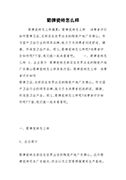
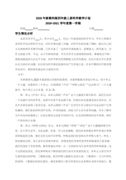
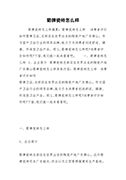
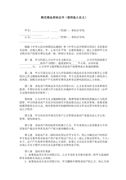
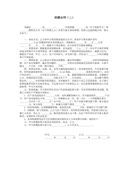
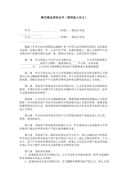












 扫一扫支付
扫一扫支付